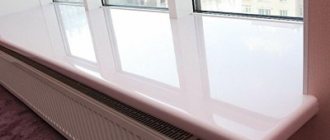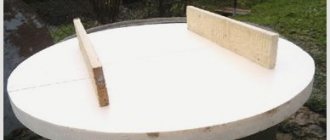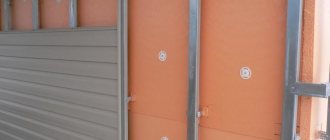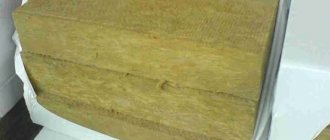The perfection of plastic window designs is far from the ideal presented in advertising. In practice, it turns out that both cold and loud sounds are allowed into the room. That is why the question of how to insulate plastic windows for the winter inside an apartment with your own hands arises over time for most of their users.
The perfection of plastic window designs is far from that ideal.
Reasons for the need for additional insulation
Violation of tightness is the main factor provoking the need for insulation work.
What causes loss of tightness:
- Errors when installing a window unit;
- Poor quality installation of slopes;
- Worn out insulation;
- Loss of elasticity of the seal;
- Wall shrinkage;
- Malfunction of mechanisms, window fittings.
Violation of tightness is the main factor
Interesting! When installing a plastic window, it requires significant destruction of the window opening. Often, builders resort to unscrupulous insulation measures, filling the impressive holes formed during the construction of a house with literally anything - from construction waste to sand and cement.
Polyurethane foam is also popular for sealing holes in walls.
Polyurethane foam, which has a cellular structure, is also popular for sealing holes in walls; over time, when condensation forms in façade cracks, it peels off from the surface and also dries out under the influence of ultraviolet rays. Therefore, over time, not only window cracks, but also the window sill will require insulation.
Classification of species
Budget canvases are mounted using double-sided tape; they are cheap and short-lived. Thermal shrink film is installed with the expectation that its geometric parameters will change due to thermal effects. Products are also classified based on their auxiliary properties, and therefore are distinguished:
- sun protection,
- anti-vandal,
- fire protection,
- soundproofing.
Solar-protective energy-saving series, for example, help reduce the brightness of lighting and regulate heat flow, and protect against ultraviolet radiation. Thanks to them, glare does not form on monitors and screens. Fire-resistant films are in demand in wooden houses; they limit the access of air into rooms, maintain integrity for 40-45 minutes in conditions of high ambient temperature, so the glass does not burst.
Typically, a heat-saving coating of the “third glass” class is used during the heating season and dismantled during the warm season.
Should you invite craftsmen or do the insulation yourself?
To independently insulate plastic windows, it is advisable to be familiar with the technological process of installing window blocks.
There is a widespread belief that the elimination of defects in the sash seal and insulation along the glass contour, as well as malfunctions of window fittings and locking mechanisms, is best left to professional specialists. The advantage of having work performed by experienced, qualified craftsmen is that they provide a guarantee for their services.
The advantage of having work performed by experienced, qualified craftsmen
Remember! Independent work on insulating a plastic window will be considered a violation of the terms of warranty service if its period has not yet expired.
Some types of work, for example, insulating the frame contour, slopes, ebbs, and window sills, can be done with your own hands. A wide selection of material on the Internet describing in detail how to insulate plastic windows if there is a draft, with step-by-step instructions in video and text format, is understandable to anyone without special skills.
If there are doubts about success, it is better to leave the planned business in the hands of experienced people
The decision about whether to insulate the windows yourself or turn to a professional for help must be made carefully. If you are confident that you can definitely handle it yourself, there is no need to spend money on such work. If there are doubts about success, it is better to leave the planned business in the hands of experienced people.
Advantages and disadvantages
Advantages of the material:
- Thin and invisible material.
- It is possible to paste both plastic and wooden windows.
- Simplicity and speed of installation - no auxiliary labor or special tools are required.
- Low cost.
- Environmentally friendly material.
- The film does not burn, but melts at high temperatures.
Some disadvantages:
- The material may tear (burst) upon strong physical contact.
- The service life is not long - 1-2 years.
Diagnostics of critical points
To determine what work is required, the window needs to be examined to look for places where wind and cold can pass through.
You can understand exactly where the window lets cold into the room using a simple technique: take an ordinary lighter or candle, and examine the perimeter of the window for the presence of blown areas, observing the deflection of the flame. If you don't have a lighter, you can use an open palm.
You should carefully examine the junction of the window frame and the wall.
On a note! You should carefully examine the junction of the window frame and the wall. Slopes, window sills and fittings are also subject to mandatory inspection.
It is especially convenient to find cracks on frosty days, when the temperature outside is contrasting compared to the room.
What materials to choose for insulation
The choice of material depends on the condition of the window system.
The most popular insulation for indoor windows:
- Cotton wool, masking tape;
- Adhesive foam;
- Polyurethane foam;
- Sealant, putty;
- Rubberized seal
- Styrofoam;
- Mineral wool.
Regular packing tape will not work for window insulation.
Important! Regular packing tape will not work for window insulation - it is very difficult to clean.
If necessary, the insulation can be mounted using dowel fastenings or an adhesive mixture.
Decorative finishing can be done using a plaster mixture
Decorative finishing can be done using plaster mixture, PVC panels or plasterboard.
What is needed to install thermal film?
To attach the thermal film, there is no need for the services of specialists; anyone can cope with this task. You should start by choosing a company and purchasing this material.
The standard kit, regardless of the manufacturer, includes the thermal film itself, as well as double-sided tape for attaching it.
Many suppliers also recommend purchasing tape with a desiccant applied to it. In addition, you will need a hair dryer, a stationery knife and scissors.
First you need to wash the window.
Not many people know that a dirty window causes heat to leak out of the room.
The thing is that heat tends to escape outside the window in the form of infrared radiation. Standard window glass is transparent, but while transmitting rays of the visible spectrum, it acts as a barrier to infrared rays that transmit heat.
Glass covered with a layer of dirt loses its transparency
Interesting! Glass covered with a layer of dirt loses its transparency for the visible part of the radiation, but at the same time the transparency of the glass for the rays of the infrared spectrum increases.
Therefore, simple, timely washing of windows, performed before the onset of cold weather, will help maintain heat in the house.
Before insulating plastic windows for the winter, they should be washed
Before insulating plastic windows for the winter, they should be washed both inside and outside. Detergents containing ammonia or ethyl alcohol will effectively clean window glass from dirt and grease stains.
In any case, before carrying out insulation work, you should also thoroughly wash the frames and the window sill, since insulation, seals and heat-saving film adhere very poorly to uncleaned frames.
Film installation
The energy-saving device does not require special knowledge when installing it. The main thing is to follow the instructions and tips for attaching it to the window glass.
Here you will find step-by-step instructions for pasting regular film, which is attached to window glass using a soap solution.
- To begin with, thoroughly wash the window with glass cleaner or the old method, using warm water with ammonia. The result from the latter remedy is in no way inferior to a commercial aerosol. Then wait for the window to dry completely.
- After this, alcohol or solvent is applied to the glass. This is a mandatory action for better fastening of the product. Take measurements of the glass unit. Advice! For regular users of this product, I advise you to cut the film a little larger than the parameters of the window glass, using a sharp stationery knife.
- Next, apply a soap solution to the glass and immediately begin pasting the film, otherwise the soapy substance will begin to dry out. And then you should not expect any effect from the product. The film begins to be glued from the top of the glass, gradually lowering the product down and smoothing it with a dry cloth. Advice! It is recommended to level the film from the center to the edges of the window. This will avoid unnecessary swelling on the product.
- The final step is to attach the insulation to the window using a regular hair dryer. The film is completely smoothed out. The result is an excellent window insulation that will not let heat out of the room and will increase the room temperature by 3-5 C.
Important! Shrink and self-adhesive films are difficult to attach to the window yourself. Therefore, before purchasing this product, you should think carefully about which film is suitable for the individual requirements of the customer.
Adjusting the pressure of window sashes
The rubber seal may lose its elasticity and volume due to the constant opening or closing of the window frame. Cold air begins to flow into the house through the resulting cracks.
It is not necessary to change the gasket. The clamping mechanism can be adjusted.
The rubber seal may lose its elasticity
Important! A completely leaky seal will have to be replaced.
There are special cylinders in the slots of the metal plugs. They fit into frame hooks and are called axles.
The hooks can be moved to the degree of pressure we need, or the trunnions can be adjusted. Loosening the bolt helps to change the position of the hook. To increase the pressure, the hooks are moved towards the street; to loosen, the hooks are moved to the side of the room.
For those who want to visually see how to insulate plastic windows for the winter with their own hands inside, using techniques for adjusting the clamping mechanism from the room, this process is presented in the video below.
How to keep warm
In winter, most of the heat is lost through the windows. There are two ways to transfer thermal energy:
- Convection;
- IR radiation.
Convection cannot be avoided; the thermal conductivity of the window can be reduced. For this purpose, there are double-glazed windows. The more chambers and glasses, the less heat loss due to convection.
More than 99% of infrared radiation passes through glass. Due to it, the room cools down in winter. The amount of heat loss through windows is 25-40%. Of these, IR radiation accounts for 15-30%.
If you have an infrared heater installed, then a considerable part of its heat can escape through the double-glazed windows. Read more about the operating principle and types of infrared heaters in this publication.
Traditional methods of insulating plastic windows with your own hands
- Cotton wool and masking tape. These materials remain the most economical. Large cracks and the entire frame around the perimeter of the window are lined with cotton wool, and then sealed on top with masking tape.
- Adhesive-backed foam insulation. Reliable protection from cold and wind, securely attached to the window frame and does not fall off. One roll contains 3 meters of material, so before going to a hardware store, you can calculate the required amount. The only drawback is that foam rubber can absorb the condensation that forms, as a result of which the seal may be broken.
These materials remain the most economical
- Putty. This method is suitable for those who are looking for a reliable answer to the question of how to insulate plastic windows if it is discovered that there is a lot of air in any part of the frame. The putty is sold in bars weighing 300 grams. One such block will be needed for one window. Knead the mixture with your hands until soft, after which all the cracks are filled with it. After hardening, the material hardens. The work is quite labor-intensive. The putty does not absorb moisture and is very inexpensive.
Putty is sold in bars weighing 300 grams
- Silicone sealant. Reliable sealing promotes heat retention. Ideal for filling voids and cracks and strengthening glass in frames. However, frames cannot be filled with such material, since with the onset of spring the window may not open.
Reliable sealing promotes heat retention
- The seal is rubberized. Reliable and durable insulation product. There are three types, depending on the thickness, to fill gaps of various sizes. Sold in skeins of 10-12 meters. The cost of such material is quite high.
Price
The cost of the material is influenced by several factors, the most important one was mentioned above. The rest are:
- Manufacturer of heat-saving film - German and Polish versions are often more expensive than domestic ones;
- Canvas size - larger materials are cheaper (in terms of size-price ratio).
Countries producing heat-saving films for windows:
- South Korea;
- China;
- Türkiye;
- Ukraine;
- Russia;
- Germany;
- Poland;
- Other.
Most often, the following brands can be embedded in online stores:
- Thermo Tap;
- NANOFILM;
- USB (Ultra SolarBlock);
- ESB technologies (Russia);
- Heat technologies (Poland).
The screenshot below from one online store shows prices for energy-saving (more expensive) window films.
There are, of course, cheaper options. For example, film from the Polish brand “Heat Technologies” can be purchased at a price of 500 rubles per set. There are two types of sets: 1.1 by 6 meters and 2 by 3 meters. The average price per square in this case will be 85 rubles. As a bonus, the set contains a 20 meter roll of tape.
The cost of insulating one window with film
A window measuring 1400 by 1300 mm will require approximately 1.82 squares of film and 5.4 meters of tape. Thus, the cost of thermal insulation with Polish film will be 150 rubles per window.
Insulation of glass surface
Cold glass has a considerable area and is a kind of refrigeration panel, since it actually lowers the temperature of the air in contact with it.
Inside the room, condensation forms on cold glass, which, with prolonged exposure to the window opening and frame, provokes:
- mold development;
- acceleration of seal wear;
- the entry of fungal spores into the air inhaled by a person, which harms the health of all people living in the room.
A simple, effective and inexpensive solution for insulating a plastic window is gluing thermal film to the surface of the glass. It contains rare earth metals deposited in a thin molecular layer, as well as nickel and silver alloys that do not allow cold air to pass through.
The application of thermal film does not have any effect on the transparency of the glass.
Due to the formation of an air cushion between the film and glass, a heat retention coefficient of 154% is achieved. The application of thermal film does not have any effect on the transparency of the glass.
To apply thermal film you will need:
- double sided tape;
- scissors;
- stationery knife;
- hairdryer
Procedure:
- Before gluing, it is extremely important to thoroughly wash and dry the glass. This determines how smoothly the film will “lay” on the surface of the glass and how long it will last.
- Place double-sided tape around the perimeter of the window.
- Separate the edges of the film using a utility knife.
- Cut a piece of canvas with scissors in accordance with the size of the window and stick it on the adhesive tape applied to the frames.
- Turn on the hairdryer and blow warm air over the film, smoothing it over the surface of the glass. If small bubbles appear, you can burst them with the tip of a knife.
A reliable way to additionally insulate windows is thick curtains
Checked! Another reliable way to additionally insulate windows is thick curtains, which have an air cushion effect similar to thermal film.
Manufacturers of heat-saving film, their prices, the cost of insulating one window with film
We list the main manufacturers and the names of their thermal films:
- USB heat-saving film (manufactured by ultra solar block) is distinguished by its gray tint and the ability to block up to 2/3 of infrared and thermal radiation. You can purchase the product at a price of about 1,500 rubles per linear meter.
- Energy-saving tint film (manufactured by Sun Control Ice Cool) 70 GR has a thickness of 56 microns and is capable of transmitting up to 70% of the rays of the visible spectrum, the cost is about 1200 rubles / linear meter.
- Energy-saving shrink film “Third Glass”, 6 m2, having a thickness of 20 microns can be purchased at a price of 600 rubles/set (covering, double-sided tape). A film with a thickness of 30 microns costs about 800 rubles. for 6 cu. m.
- SaveEnergy 30 has a long service life of up to 10 years, the cost of 1 linear meter is about 600 rubles.











